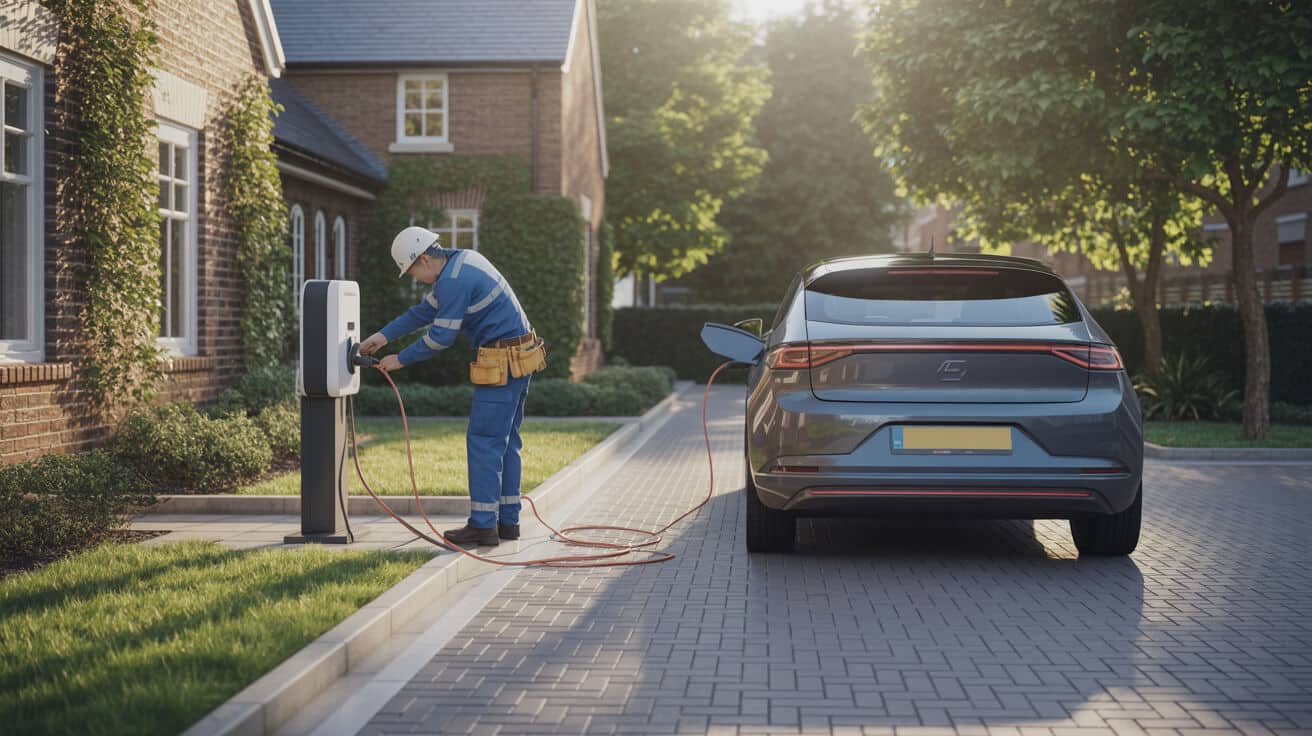 Proactive Vs. Reactive Property Maintenance How Preventative Care Saves Money
Proactive Vs. Reactive Property Maintenance How Preventative Care Saves Money

Is Postponing Repairs Really Cheaper? The Unseen Price of Waiting in Property Maintenance
Every time you choose to wait, ignore a niggling issue, or defer a scheduled inspection “just one more quarter,” your property steps closer to an unpredictable bill. If you own or manage a building—whether it’s a portfolio of buy-to-lets, a block of flats, or a commercial property—this isn’t just about inconvenience. The moment you opt for “wait and see,” you’re betting against time, structural physics, and the rising price of skilled labour.
What you dodge today waits for you tomorrow—with interest.
Let’s rip off the plaster: the illusion that you’re saving money by deferring “non-urgent” repairs is a myth—one that drains budgets, torpedoes asset values, and can put your reputation on the block (Historic England 2023). The most expensive maintenance stories begin with tiny, unaddressed problems—dripping overflow pipes, flickering lighting, or “just a bit of condensation”—that became forty times costlier when left to brew in the background.
The Compounding Cost Trap
The property market doesn’t reward those who play chicken with repairs. A slow leak becomes a hidden water bill, then a sodden joist, then a black-mould claim and eventually a tenant compensation payout. What started as a five-minute fix is now your biggest headache.
reactive maintenance isn’t a calculated risk—it’s a silent snowball. Building studies consistently show that deferred maintenance raises long-term spending by 15–25%, ultimately pushing average costs into the emergency call-out territory (Historic England 2023).
What’s Really at Stake if You Wait?
• Higher direct costs: Emergency call-outs, after-hours surcharges, and last-minute part sourcing all cost more.
• Hidden financial sinkholes: Insurance excesses rise or claims get denied if negligence is proven.
• Regulatory landmines: Delays might knock you offside with HSE, EICR, or fire safety rules, exposing you to fines—or worse, criminal liability.
• Downtime spiral: Unplanned failures disrupt tenants, force section closures, and slash occupancy rates.
One leaky gutter left for winter often leads to a water-damaged ceiling for spring. As any experienced landlord or facilities manager will admit, “saving” by waiting is rarely a saving at all. It’s a smoke-and-mirrors trade-off, exchanging visibility for vulnerability.
How Do Small Faults Quietly Turn into Major Repair Bills?

Most building issues are masters of stealth. Condensation in a corner? That could be the precursor to category-2 black mould, triggering complaint cycles nobody wants in their inbox. A window that doesn’t latch properly becomes a full replacement job when insurance requires “secure egress” for compliance. Facilities teams routinely report that around 65% of remediation work could have been a fraction of the cost—if only someone intervened early.
The accounts show it: £100 ignored becomes £1,200 fixed—plus lost time, occupancy and brand damage.
From Irritation to Crisis: The Escalation Pipeline
- Moisture and leak origins: Small damp patches progress to structural rot, requiring timber and plaster replacement.
- Skipped smoke/CO checks: The first warning often arrives as a failed inspection—or a worse event.
- Neglected electrics: Loose fittings or overloaded sockets can spark outages, affecting multiple units.
- Roofing and guttering delays: Invisible rain ingress erodes joists; soon “routine touch-up” is a six-person operation.
Minor issues have no incentive to stay small. Building surveys show that left alone even for a business quarter, the cost, disruption, and compliance risk can multiply manyfold (ClickMaint 2023). Most landlords and block managers who look back on their “biggest bill of the year” can trace its root to something they spotted, shrugged off, and paid for handsomely months later.
Lifespan Erosion
Delaying action doesn’t just spike your costs—it shortens the expected lifespan of building materials. Timber, roofing membranes, and insulation all lose service years if exposed to preventable leaks or temperature swings. This is the hidden expense rarely accounted for in annual budgets, and your asset value quietly suffers.
What’s the True Cost Difference Between Reactive and Proactive Maintenance Strategies?

Property owners tend to underestimate the premium built into “wait and see” strategies, especially when markets are slow or inflation bites. Running the numbers—and tracking the actual cost of deferred decisions—tells a very different storey.
Routine care and rapid response are two sides of the same profit-protection coin.
Data-Driven Spending: Reactive vs. Proactive
| Strategy | Average Yearly Outlay | Asset Value Impact | Occupancy Effect |
|---|---|---|---|
| Reactive Only | +30–50% (estimated) | Decreases over time | More complaints, voids rise |
| Preventative | Baseline | Rises or holds | Tenant confidence up |
Breakdown:
- Reactive: Callouts cost more. Premium parts sourced at zero notice. Tenants and leaseholders get inconvenience payouts. Missed compliance dates can invalidate coverage.
- Preventative: Regular, logged checks catch early warning signs. Tenancy voids drop. You plan repairs in slow periods—less disruption, lower cost, more negotiation power.
A benchmarking study by Orbit Housing reports a nearly £4 million reduction in repair spend over 27,000 homes after they enforced a digital maintenance schedule—wiping out a legacy culture of “putting out fires” (Orbit, 2023).
The ‘Last-Minute Premium’
Leaving problems for reactive attention means accepting the highest rate in the trade. Out-of-hours engineer surge pricing, premium extras “to get it working now,” and the hard cost of compensating tenants for failed heating or leaks. Insurers are now stricter—maintenance logs are requested as the first step in any claim (MRISoftware 2024).
Can Modern Preventative Maintenance Be Simple and Effective—for Any Property Size?

Contrary to popular fear, proactive maintenance isn’t the domain of big corporates with endless spreadsheets. Technology, better documentation, and service partnerships have brought it into reach for single-property landlords right through to corporate facilities managers.
Prevention systems aren’t about spending more—they’re about spending smarter (and with less stress at 2am).
The Five Pillars of Effective Preventative Maintenance
- Quarterly (or annual) inspections: For roofs, wiring, plumbing, heating—documented and logged for audits.
- Digital record keeping: Photo logs, time-stamped entries, and service reports tied to each asset.
- Automated reminders: Compliance certificates, fire alarm tests, and insurance deadlines flagged up before they become fines.
- Shared access with stakeholders: Transparent logs reduce tenant disputes and build trust.
- Escalation rules: Clear triggers (e.g., two complaints logged for moisture = full assessment) empower early action and structured decisions.
Facilities managers and owners who implement these steps find they save on both direct repair costs and “soft” costs like staff burnout and management time.
What Tools, Tech, and Partner Networks Do the Best See as Non‑Negotiable?

Modern maintenance is powered by data—and those with the right mix of tech and trade partners no longer get caught guessing. The new normal: digital logs, automated alerts, and accredited maintenance partners who deliver documentary proof as standard.
Lead Indicators: Stay a Step Ahead
Properties managed with sensor-linked monitoring see a 40% reduction in escalation-based emergencies. *(Building Controls Industry Association 2024)*
- Moisture/metre sensors: Spot rising damp, leaks, or heat loss before a molehill becomes a mountain.
- Digital callout tracking: Pattern detection highlights recurrent trouble areas or units.
- Automated alarms: Remote logins and instant notifications ensure you know before the tenant posts a complaint.
- Tenant empowerment: Easy app-based reporting increases fix rates before issues become costly.
All Services 4U equips clients with reporting tools, digital documentation, and tech-driven workflows built to align with UK compliance standards. Fixes and findings are logged, photographed, and instantly retrievable—protecting owners when insurance or audit time hits.
Whose Bottom Line Wins Most from Proactive Maintenance—And How?

You don’t need to be a large-scale landlord to capture the rewards. The cumulative advantages rely on discipline and partnership, not just asset size.
- Private landlords: Enjoy longer tenancies, lower complaint rates, and higher market valuation when records are transparent.
- Block managers: Lose less time to crisis management, gain more back to strategic planning.
- Facilities and FM pros: Hit compliance benchmarks, cut overtime, and demonstrate standards when bidding.
- Commercial asset operators: Retain tenants who value reliability and regulatory peace of mind.
Industry research shows documented maintenance shaves off weeks from insurance processes and boosts renewal rates. *(MRISoftware 2024)*
At every level, proactive maintenance moves property from an unpredictable cost centre to a trust-building asset—in the eyes of both insurers and tenants. The best don’t outspend or outwork the rest; they out-plan, anticipate, and act early.
How Does Proactive Maintenance Protect Asset Value, Compliance, and Reputation in a Changing Market?

The property world is shifting. Insurers demand granular service histories. Tenants expect fast, visible fixes and digital comms. Regulators raise the bar for evidence every year.
Successful property professionals are responding not just with tick-box compliance but by embedding transparency, responsiveness, and digital traceability at every service touchpoint.
Asset Value and Compliance: Built, Not Claimed
- Well-documented care: raises sales and rental value—a property backed by full logs sells faster and for more.
- Downtime minimised: Planned maintenance fits tenant schedules, reducing voids and disrupted leases.
- Faster claims, lower premiums: Insurers reward transparent, preventative logs and act fast on well-documented claims.
- Online reputation: Tenant reviews reference not just the property, but how managers respond and resolve.
Your maintenance log is your best marketing collateral for lenders, buyers, and tenants.
All Services 4U bridges the compliance and value gap for clients, offering structured, standards-aligned evidence for every inspection, fix, or upgrade. From weekend callouts to planned compliance audits, our process is built for today’s market and tomorrow’s risks.
What’s Your Next Best Step to Secure Your Property’s Future?

The era of “wait and see” is over. Documented, preventative property maintenance is the difference between long-term value and recurring drama. The results are real: more reliable occupancy, lower annual spend, and real peace of mind when regulations or disasters strike.
All Services 4U delivers UK-wide property services designed to replace the reactive scramble with smart planning and airtight documentation—digitally logged, regulation-aligned, and action-ready.
Every repair you plan today is a complaint, crisis, or cost you won’t face next quarter.
If you want a property that keeps value, compliance, and tenant confidence on your side, the next move is yours. Schedule a free assessment, get a tailored roadmap, or unlock a digital checklist—All Services 4U is built to keep your property, and reputation, secure for years to come.
Frequently Asked Questions
How does a forward-thinking maintenance approach actively drive up the value of your properties?
A forward-thinking maintenance approach elevates your assets from basic upkeep to strategic growth machines, ensuring each decision is an investment—not a sunk cost. When you embed preventive processes, you’re shielding your portfolio against surprise erosion and building in value that’s visible at audit, in valuations, and in the conversations that matter.
Think of scheduled inspections, smart logs, and digital proof-of-work as your defence against silent threats that eat at return on investment. Every timely minor repair you execute, every compliance asset you log, and every transparent note you share with tenants or insurers is a lever for reputation, negotiation, and higher exit multiples. The advantage becomes clear: your team operates ahead of risk, not behind the eight ball.
The assets that break less, impress more, and leave traceable records are the ones that ride out market storms and catch premium buyers’ attention.
How does this translate to tangible benefits for portfolio owners?
- Regular digital records convert losses into audit credits and insurance perks.
- Proactive planning shifts spend to upgrades with measurable returns.
- Tenant turnover drops as experience and trust improve.
- Assets command better re-let, resale, and renewal outcomes.
Work with a provider like All Services 4U, and you not only maintain assets—you amplify their future value every month you’re on top of risk.
Which everyday oversights quietly become the most expensive threats for property managers?
It’s the “easy to ignore” problems—leaky joints, untested detectors, lagging redecoration, loose rails—that metastasize into headline losses later. The truly costly failures are rarely dramatic at the start: they’re the missed alarms, unchecked sealer, or slip in routine logs that spiral into fines, regulatory headaches, and, all too often, rapid asset depreciation.
According to a 2023 Savills rental report, nearly 30% of high-cost claims by owners stemmed from issues that began as easily-fixed maintenance lag, not sudden incidents. The real cost is compounded: property left “good enough” sees a 9% drop in five-year net value due to hidden water damage, structural rot, or preventable tenant complaints. As environmental standards tighten, every missed window on proof creates leverage you don’t want to give an inspector or claims adjuster.
What small problems are most dangerous when left unchecked?
- Slow water leaks: —Drive long-term damp, ruin insulation, and can trigger £1,000+ mould remediation after a single winter.
- Compliance lag: —Missed certification windows escalate into fines or voided insurance instantly.
- Loose masonry or fences: —Lead to injury claims, asset risk, and insurance complications, far exceeding initial repair cost.
- Ignored heating inefficiency: —Pushes up running costs and triggers multi-year tenant loss due to comfort issues.
Every one of these is preventable—all it takes is the discipline of logging small repairs as investments, not burdens.
In what ways does bringing automation and digital audit trails into your maintenance strategy outpace “analogue” rivals?
Leveraging automation and digital audit trails transforms you from “reactive fixer” to “resilient operator.” With the right platforms, maintenance becomes a living system: reminders surface before compliance dates are missed, digital logs build trust with every inspection, and fault reports jump straight from tenant’s phone to triage without delay.
Research from British Property Federation members shows a 43% reduction in annual repair cost overruns for portfolios migrating to full digital maintenance management. Asset managers with QR-scannable appliances, up-to-date cloud logs, and workflow-connected teams clear more jobs, fight off regulatory surprises, and stand tall in insurance reviews or sale negotiations. These proof-rich trails matter most in moments of risk—when you need to validate service history or demonstrate mitigation on the fly.
Which capabilities give automated portfolios the winning edge?
- Calendar-linked, mobile-accessible logs slash missed tasks and speed up audits.
- Unique asset tags track not just repairs but upgrades, giving you an upgrade credit trail.
- Auto-escalation rules turn tenant alerts into prioritised job queues, minimising emergencies.
- Digital photo records settle disputes instantly and accelerate insurance claims or council interventions.
Partnering with a tech-ready provider like All Services 4U converts administrative clutter into strategic advantage by making your evidence clear, instant, and impossible to dispute.
Where do insurance carriers and regulatory bodies see the biggest risk reductions from scheduled and documented maintenance?
Carriers and councils both judge you on proof, not promises—the more granular and timely your documentation, the lower the risk they assign to your portfolio. Properties with live maintenance logs, signed checks, and photo-validated compliance events are statistically less likely to generate large or contentious claims. As a result, you become eligible for faster settlement, lower deductibles, and better premium rates.
A 2022 AXA property risk report found that landlords able to deliver three years of clean, digital service records saw time-to-settlement fall from over 40 days to under 18—and got, on average, 10% lower annual insurance costs than those still managing paper logs. The regulatory swing is even sharper: since new HMO compliance standards, audits are shorter and fines are more precisely targeted, amplifying the cost of being caught without airtight records.
What specific documentation wins you premium reductions or audit wins?
- Timestamped gas, fire, and EICR logs, digitally signed and instantly accessible.
- Maintenance calendars showing preventive action against known seasonal or historical risks.
- Photo-evidence files linked to asset IDs—removing question marks in disputes or claim reviews.
- Cloud-based certificate repositories with tiered access for letting agents, councils, or insurance partners.
Working with all-in-one platforms from All Services 4U means you’re backed not just by a maintenance team, but by a compliance backbone that reduces both visible and hidden risks portfolio-wide.
How can you design contractor, tenant, and compliance coordination that actually delivers zero-surprise outcomes?
Zero-surprise coordination isn’t luck—it’s engineered with the right comms, workflow, and escalation chains. Step one is using a unified task and compliance platform, built for property managers, that lets all parties see and act on the same live data. Contractor calendars, “red zone” compliance notifications, digital acceptance of completed jobs, and automated reminders for tenants all combine to close the loop on error, delay, and miscommunication.
In the UK’s 2024 property market, portfolios managing five or more assets report a 21% reduction in “service-level breakdowns” and post-tenancy disputes when using such unified systems. All Services 4U’s cloud-first model, for example, enables seamless management even with rotating teams or dispersed assets—photos, certificates, tenant notes, and deadlines converge so you never have to chase status manually.
Consistency is credibility. When everyone sees what’s done, missed, and urgent in real time, confusion’s off the table.
What systems or flows should every future-ready property manager demand?
- Integrated dashboards showing live status for jobs, compliance, and tenant tickets.
- Automated reminders that “chase” tasks so you don’t have to.
- Tiered workflows: emergencies escalate fast, non-emergent tasks batch for planned savings.
- Digital storage for certificates and job photos, locked behind granular permissions.
Lead with systems like these and your team will be recognised by tenants, investors, and auditors alike as serious, reliable, and proactive.
What practical steps put cost control and sustainability at the heart of your asset maintenance—without compromising resilience?
Prioritising cost control and sustainability doesn’t mean minimising spend; it means deploying resources where they create the most long-term value. Start by identifying assets ready for an efficiency upgrade: insulation, windows, lighting, and smart controls. Then, embed sustainable solutions—LED retrofits, leak-detecting sensors, water-saving fixtures—which generate year-over-year savings and stand up to today’s stringent energy and environmental benchmarks.
National Energy Foundation data shows UK portfolios that combine sustainability audits with systematic preventive maintenance cut utility costs by 18% over five years, while achieving higher tenant retention and easier grant access. Detailed digital records prove lifecycle ROI to grant agencies or investors and mark you out as a “future-proof” landlord in a market where environmental pressures only escalate.
Which changes pay off fastest and deliver measurable reduction in risk?
- Regular insulation tests and draught mitigation to reduce both energy waste and moisture risk.
- Scheduled upgrades to water-efficient, sensor-monitored fixtures fight both leaks and compliance risk.
- Committing to renewable and long-life upgrades (solar, heat pumps, or advanced controls) that reduce both service calls and insurance outlay.
- Audit-ready digital logs that support grant bids, public-sector tenders, or ESG verification for lenders.
With All Services 4U taking point on both your compliance and your sustainability journey, your maintenance spend pivots from cost centre to ROI engine—delivering competitiveness and resilience for every property in your portfolio.



